Who is AMREF Flying Doctors
Founded in 1957, AMREF Flying Doctors is the leading provider of fixed-wing air ambulance services in the region. They provide medical evacuation services within Africa and other continents. Additionally, they provide medical escort to patients on commercial airlines and repatriate patients to Europe, Asia, the Middle East, and the Far East.
The company has invested in a fleet of aircraft ranging from short-field Pilatus PC 12 aircraft to long-range Citation Bravo and Citation XLS jets. Additionally, they operate Advanced Life Support (ALS) Ground Ambulances and a 24-hour Operations and Emergency Control Center (OECC) at Wilson Airport, Nairobi.
AMREF Flying Doctors is accredited by the European Aeromedical Institute (EURAMI) for its high professional standards. The accreditation seeks to identify air ambulance service providers that specialize in Long-Range/Intercontinental Fixed Wing and Commercial Medical Escort, with an emphasis in Adult Critical Care categories.
In 2011 and 2014, AMREF Flying Doctors was named the Air Ambulance Provider of the Year by the prestigious ITIJ (International Travel & Health Insurance Journal. The international award is given out by the International Travel Insurance Industry within the industry of medical providers and travel insurance. This demonstrates AMREF Flying Doctors’ commitment to providing the utmost quality services in accordance with international standards
“What makes us stand out and what is appreciated by international stakeholders is that we have very high standards of professional excellence, despite our challenging operating environment,” Says Dr.Lelo, AMREF Flying Doctors Medical Director.
AMREF Flying Doctors’ services offering
Air Ambulance
Using their fleet of short- and long-range turboprop and jet aircraft, they provide air ambulance services from Africa to the rest of the world. Their air ambulance services are accessible through;
- Subscription product – Maisha air and ground ambulance plan covering Eastern Africa
- Service Provider Agreement (SPA) directly to the company – covers beyond MAISHA coverage areas and only applicable to organizations
- Clients Insurance Cover
- Direct payment
Ground ambulance
Their ground ambulances are fitted with integrated patient transport stretcher systems and the latest medical equipment to ensure efficient ground transport service and world-class patient care. These ambulances are always available on request for medical transfer services.
Training
Emergency Life Support Skills training is also available through AMREF Flying Doctors, which is provided by highly specialized medical personnel.
Medical Standby
AMREF Flying Doctors provides medical standby services using ground ambulance, helicopter or fixed-wing aircraft. They partner with major events to provide the necessary medical care. Some of these events include school activities, polo sports, horse shows, national events such as the Safaricom Lewa marathon and Rhino Charge.
Commercial Medical Escort
AMREF Flying Doctors provides world-class medical escort services on commercial flights that are more appropriate for non-critical patients. They make all necessary arrangements to ensure their client’s transportation is worry-free.
What is an air ambulance?
An air ambulance is a specially fitted aircraft with medical equipment used to transport injured or ill patients over long distances or out of remote areas efficiently, comfortably, and quickly. Fixed-wing aeroplane and helicopters are the two types of air ambulances used for medical transport.
Air ambulances are sometimes used when ground ambulances are unable to reach a patient’s location quickly in the event of a medical emergency.
Due to the nature of the aviation and medical industries, air ambulance transportation costs are prohibitively high, rendering the service inaccessible to the vast majority of Africans. These evacuation costs are determined by a number of factors, including the type of aircraft to be used, the distance travelled during the mission, the number of medical personnel on board, and the severity of the patient condition.
With this in mind, AMREF Flying Doctors developed the Maisha air and ground medical evacuation plan ten years ago to meet the continent’s patient transfer needs.
Understanding AMREF Flying Doctors Air Ambulance Services
AMREF Flying Doctors aircraft are fitted with state of the art medical stretchers and are stocked with life-saving medical supplies and equipment, such as ventilators, monitors and oxygen, and accompanied by highly trained medical personnel, in order to sustain a patient’s life until they can be transported to a hospital.
Air ambulance services have developed into a critical component of the health care system, saving lives and lowering healthcare costs when used appropriately. Dr Joseph Lelo, Medical Director of AMREF Flying Doctors, noted that despite the high number of medical emergencies caused by health-related issues, terror attacks, tribal wars, and cross-border clashes, very few African countries receive this service. He therefore urges on the need for emergency air evacuation, to minimize the time-lapse before a critically injured or ill patient can get to a hospital.
The saying “time is human tissue” perfectly describes AMREF Flying Doctors’ air evacuation services, as it means that death and disability from severe injuries can be avoided with prompt treatment. According to Dr. Lelo, air medical patient care and transportation pose a lower risk to the patient’s life than a stay in an inadequate medical facility.
AMREF Flying Doctors is well-known for successfully evacuating patients worldwide including conflict zones such as Somalia, South Sudan, Congo and Yemen. They evacuate up to 1000 patients each year and provide charity evacuations to patients who cannot afford medical evacuation services.
Maisha Medical Evacuation Plan
With knowledge of the continent’s need for medical evacuation services and the associated costs, AMREF Flying Doctors determined that it would be worthwhile to provide professional medical evacuation services at affordable prices, beginning with the Eastern Africa region. Maisha Air and Ground Ambulance Plan caters for individual subscribers, small groups, families, corporates and tourists that are based or are travelling in Kenya, Tanzania, Uganda, Rwanda, Burundi, South Sudan and Ethiopia.
The four packages offered under the Maisha Medical Evacuation Plan
| LEVEL | REGION(s) COVERED | COST PER PERSON PER YEAR -KES |
| Maisha Bronze | Kenya (Air and Ground Evacuation) | 2,500 |
| Maisha Silver | Kenya, Tanzania, Zanzibar | 4,900 |
| Maisha Gold | Kenya, Tanzania, Zanzibar, Uganda, Rwanda, Burundi | 5,500 |
| Maisha Platinum | Kenya, Tanzania, Zanzibar, Uganda, Rwanda, Burundi, Soth Sudan & Ethiopia | 11,000 |
Advantages of Maisha Medical Evacuation Plan
Once you enroll in and pay for the Maisha annual plan, you are guaranteed annual access to their 24-hour Medical Helpline for medical advice at any time and from any location; unlimited evacuation flights for medical emergencies; unlimited ground ambulance transfers within Kenya; and direct contact with AMREF Flying Doctors and their medical professionals
Why Maisha Medical Evacuation Plan makes Sense
For instance, if a patient is evacuated from Mombasa to Nairobi, the cost is approximately KES 700,000, compared to KES 2500 for unlimited air and ground ambulance transfers within a year for a Maisha member.
Investing in infrastructure
Often, AMREF Flying Doctors invests in well-equipped ground and air ambulances as well as new staff and staff training programs. Over the last three years, the organization has added two air ambulances into its fleet.
Since the outbreak of COVID-19 in the region, they have received numerous requests to transport infected patients in Kenya and other regions. In response to the growing need, the organization then invested in six COVID-19 portable Isolation Chamber.
All AMREF Flying Doctors clients – including Maisha members, Diplomatic missions, General Public and members covered by the NHIF contract for emergency air evacuation services – have access to the patient transport isolation units in the event of a Covid- 19 related medical evacuations.
How does AMREF Flying Doctors Respond to Emergency
- Our ICU flight nurse manning the 24hr control centre, take the details of the patient, their condition, location and coverage to quickly establish the urgency of the request. They walk you through the aeromedical activation process.
- Once the medical team has confirmed we have an active medical emergency requiring evacuation, the flight Operations team immediately kicks into gear to identify the closest landing airstrip/ airport and begins the flight planning process. The flight Operations team handles all the evacuation logistics including route planning, obtaining flight clearances, VISAs, flight tracking and communication.
- AMREF Flying Doctors medical and flight crew are always on standby to respond to medical emergencies. Once a flight is activated, the aircraft is loaded with the required medical equipment and dispatched within a short period of time. Aboard the aircraft as well as ground ambulances where applicable, our medical staff monitor and care for the patient up until handover at the receiving facility with all the required medical reports in hand.
Stephen Gitau, AMREF Flying Doctors’ CEO shares the organisation’s experiences since the outbreak of COVID-19
- How did AMREF Flying Doctors adapt to the global lockdown and the transportation of patients during the pandemic?
The spread of COVID-19 into the Eastern Africa region presented a slew of operational and business challenges to AMREF Flying Doctors, both locally and internationally. Our capacity to move patients from the region into Nairobi – the region’s centre of medical excellence – and onward transfers to international destinations was initially seriously compromised. The shutdown of the hospitality industry, as well as restrictions on international, regional, and local travel, meant that we were unable to provide the majority of our air ambulance and related services.
As a professional air ambulance service provider in the region, we saw value in partnering initially with the government of Kenya – supporting it logistically for the movement of medical personnel and delicate medical equipment to remote areas in its COVID-19 response efforts. This aided in the strengthening of relationships and paved the way for obtaining critical support and clearances necessary to continue domestic, regional, and even international flights.
Additionally, in order to mitigate commercial flight restrictions and associated logistical complications, we chose to increase our wing-to-wing partnerships. This contributed significantly to the continuity of regional and international patient transfers into and out of Africa.
- What measures do you have in place to enable business continuity and to ensure the safety of your staff and customers?
Due to the highly infectious nature of COVID-19, we had to take strict measures to ensure that our medical, air and ground crews could handle patients safely. We have so far invested in six Portable Patient Transport Chambers and other related medical equipment such as PPE.
AMREF Flying Doctors became the first air ambulance service provider in East & Central Africa and the first emergency response organisation to make this investment. We successfully transported over 18 COVID-19-related cases within the first six weeks of using the isolation chamber, and have successfully transported more than 400 COVID-19 associated cases.
Additionally, we implemented a strict work-from-home policy for non-essential employees and later implemented a rotational reporting system for all staff members. This has worked exceptionally well in supporting our 24/7 emergency operations while exposing staff to the lowest possible level of COVID-19 infection.
- What have been some of AMREF Flying Doctors’ most significant challenges since COVID-19 was declared a pandemic?
The immediate challenge was the health risk posed to our staff, clients, and the general public as we sought to continue providing services even in the COVID-19 context. This was especially true in the early stages of the outbreak when information about it was hazy and dynamic.
The second challenge was the impact on our bottom line as a business, particularly in light of the industries we serve, such as the insurance and assistance market, the tourist market and others who were heavily negatively impacted by the outbreak.
Thirdly, the logistical nightmare created by the closure of borders, restrictions on travel and movement of people, and other government directives aimed at halting the virus’s global spread. Again, this was exacerbated by the fact that these directives and restrictions changed over time, making it extremely difficult to plan, manage costs, and commit to missions as requested by clients.
- How have you met and overcome these challenges?
Regarding the health risk and exposure to our stakeholders, we immediately formed a task force led by our medical director that reviewed and put together protocols affecting all areas of our operations at the onset of the outbreak. These protocols enabled us to continue operating with minimal disruption, lobby various governments and authorities for mission exemptions, and foster a reassuring work environment for all our stakeholders. This task force is still operational today and continues to play a critical role in guiding our daily operations and critical areas of our business.
Let us say that when one door closes, another one opens in terms of commercial impact on our revenue. To begin, the near-decline in business from visitors to Eastern Africa has been replaced by an unprecedented increase in demand for regional and international transfers – including numerous cases involving COVID-19. As a result, our quick decision to expand our capacity for transporting highly infectious patients began to bear fruit sooner.
Secondly, due to our strong relationship with the Government of Kenya and several public sector agencies, we were able to secure an assignment to train staff from various government agencies at Eastern Africa’s eight international airports in preparation for the airports’ resumption of service. We believe this had a significant ripple effect, not only on the company’s profile but also on our bottom line during these trying times.
We took a two-pronged approach to overcoming logistical obstacles. One was establishing close ties with regional governments and authorities. From the onset of the outbreak, we maintained contact with the region’s relevant government agencies, offering our assistance and insight where possible and providing information that would help them understand the critical need for us to continue providing our services.
Second, was providing support to our operational staff, who saw their workload per mission increase significantly as a result of the numerous and constantly changing protocols required to conduct a successful medevac mission. The management also became more involved in day-to-day operations to ensure that mission-critical staff received the support they required at various operational touchpoints and worked in a supportive environment to ensure the best outcome possible in a challenging situation.
- What will be your main business focus in the near future and going forward?
Given the learnings from operating in the COVID-19 context and in line with our company strategy, we are looking to strengthen our capability to respond to such health crises should they occur in the future. This is with the intention of continuously reviewing market innovations to which we can adapt much more quickly than in the past, thereby assisting us in better preparation for such occurrences.
Secondly, we seek to build better collaborations and partnerships with other institutions to ensure that as many people as possible in the region become members of the Maisha air and ground ambulance plan and have direct access to our services in times of need.
Lastly, we will continue to invest in critical strategic capabilities that drive to maintain our market leadership for the benefit of our customers.

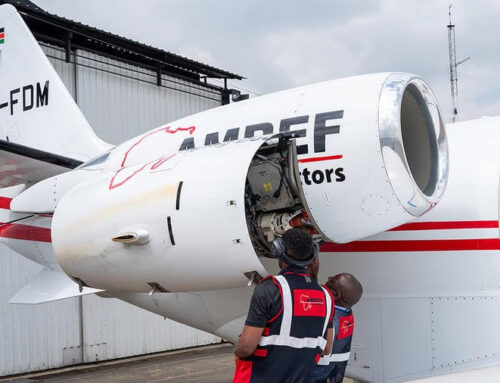
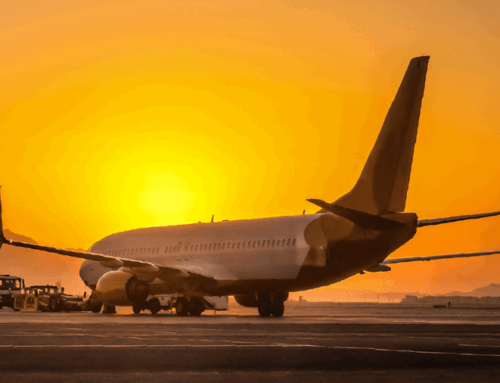
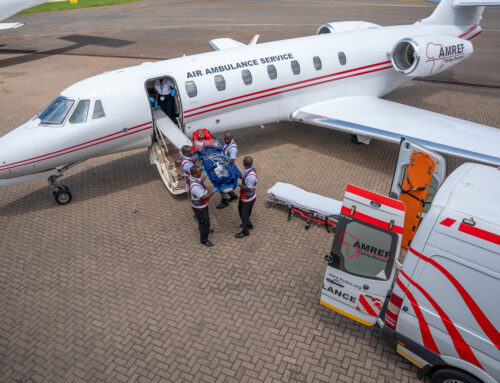
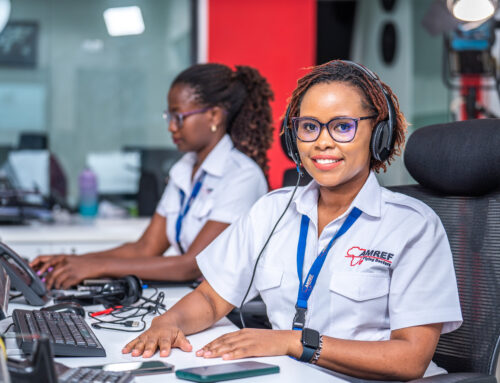




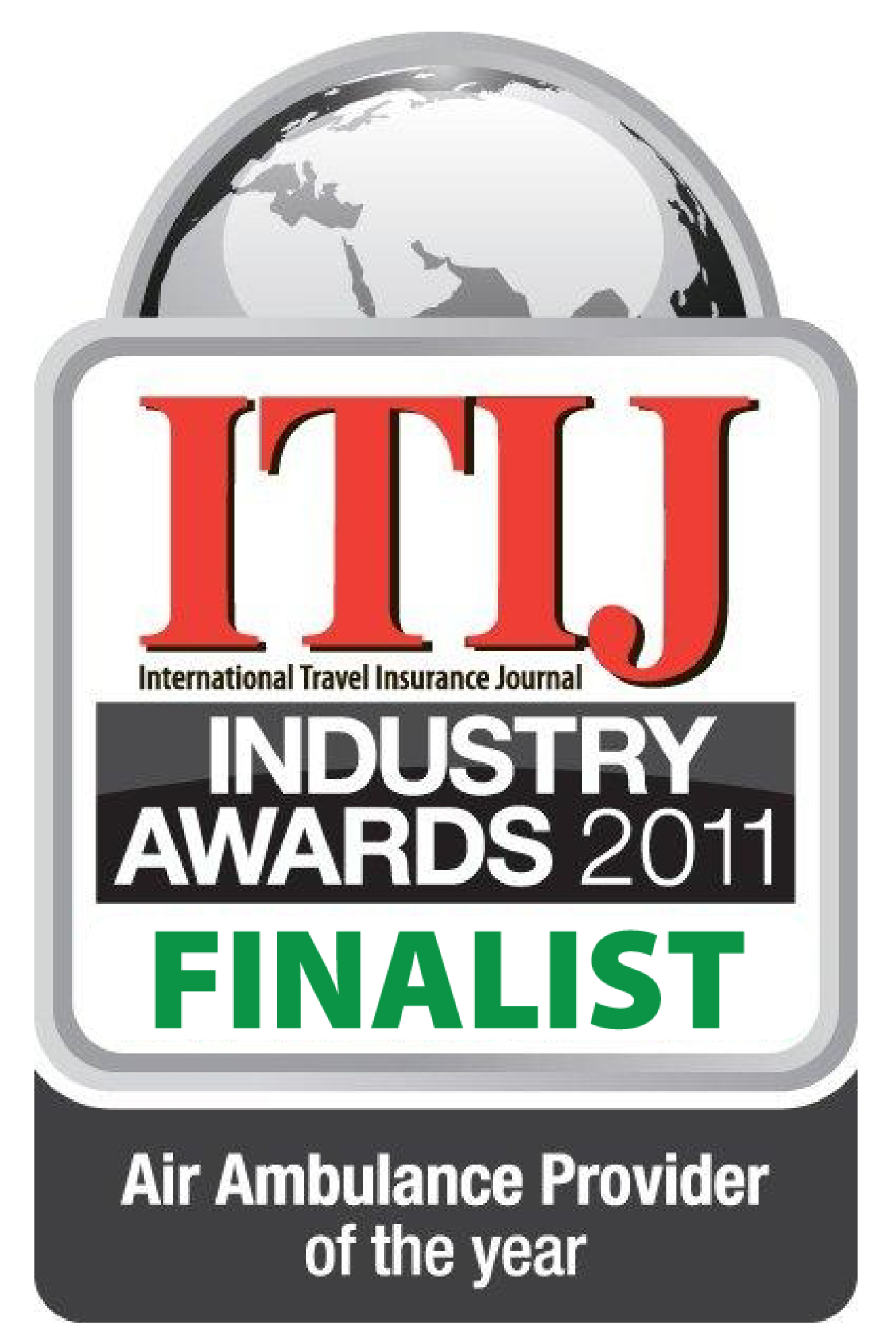
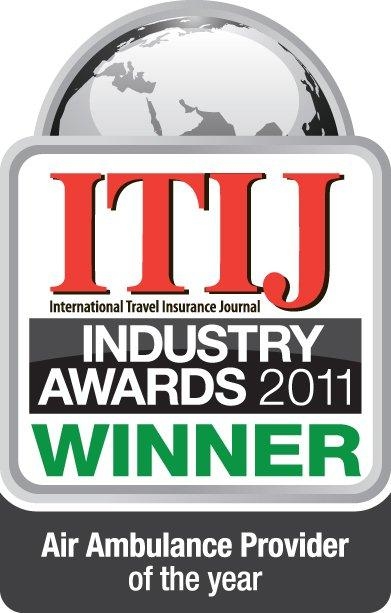

Leave A Comment